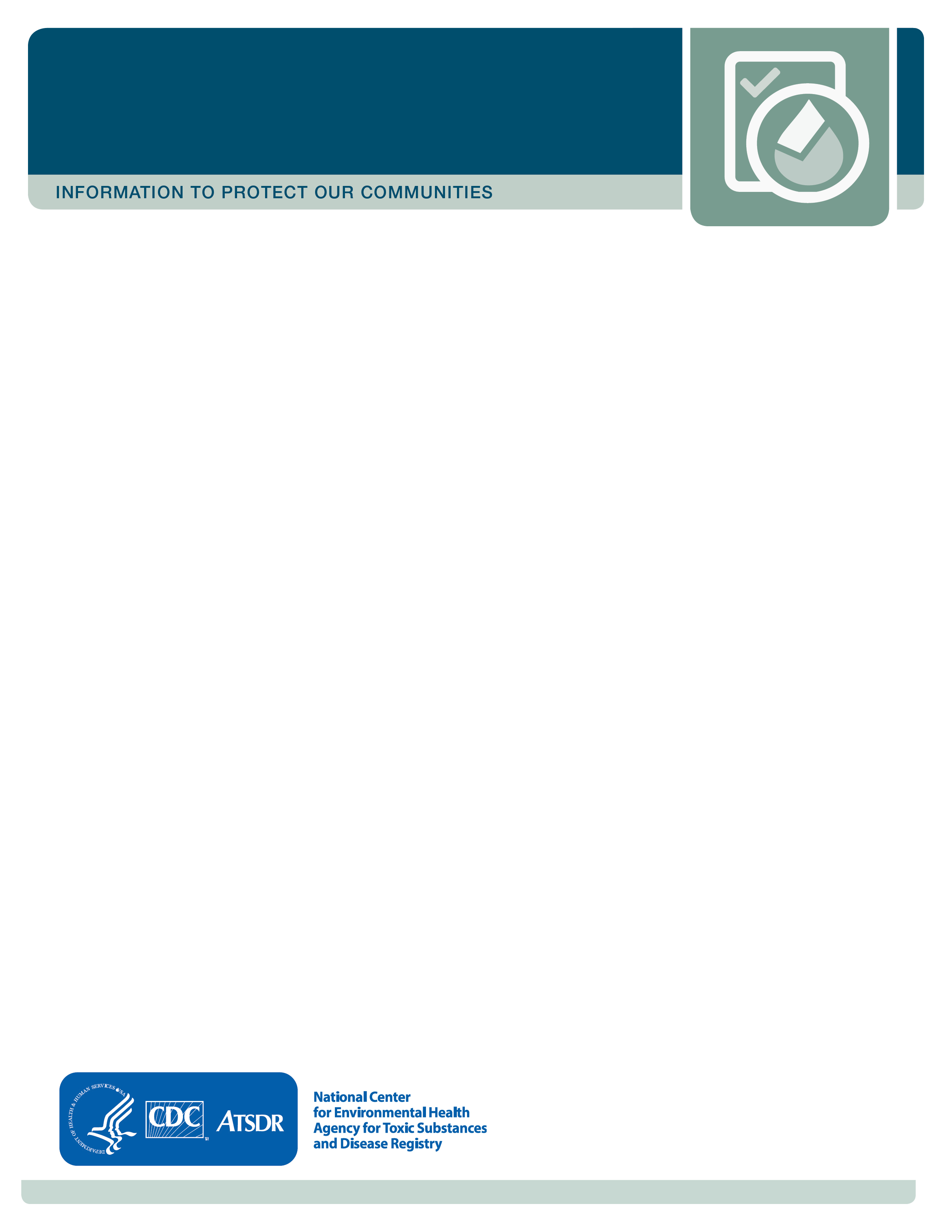22a. PFAS Fact Sheet
M_Att22a ATSDR PFAS Factsheet.docx
Human Health Effects of Drinking Water Exposures to Per- and Polyfluoroalkyl Substances (PFAS): A Multi-site Cross-sectional Study
22a. PFAS Fact Sheet
OMB: 0923-0063
Understanding
your PFAS Test Results

Exposure
means contact with a substance by swallowing, breathing, or
touching the skin or eyes. Excretion
is the process whereby substances, like PFAS, leave the body.
In other words, your blood PFAS levels measure how much PFAS you took into your body (exposure) minus how much left your body (excretion). Exposure and excretion are different for each person; two members of the same household may have very different PFAS levels. |
|
|
What
are the sources of |
How are PFAS excreted from the body? |
|
People living near sites where a release of PFAS has occurred may be exposed to drinking water contaminated by PFAS.
People may be exposed to PFAS from some consumer products (non-stick cookware, food packaging, stain resistant carpeting and upholstery, water repellant clothing, etc.).
People may be exposed by eating food grown or raised in contaminated soil or water, including wild game and fish.
Babies born to mothers who were exposed to PFAS can be exposed before they are born, while breastfeeding, or while drinking formula mixed with PFAS-contaminated water.
Only a small amount of PFAS can get into your body through your skin. Showering and bathing in water containing PFAS should not increase exposure.
For people who work with PFAS (e.g., manufacturing them or using fire-fighting foam) breathing them is the most likely route for exposure. |
Some PFAS leave the body slowly over time, mostly through urine. People who have kidney disease may not excrete as much PFAS from their body through their urine as healthy individuals.
Women tend to excrete PFAS more quickly than men.
Some PFAS leave the body in blood during menstruation. Women who menstruate may excrete more PFAS than those who do not.
Women who have been pregnant may have excreted more of the PFAS in their bodies than those who have not.
Some PFAS can leave the body in breastmilk. Women who have breastfed may have excreted more of the PFAS in their bodies than those who have not.
Some PFAS build up in the blood. People who have donated blood may have excreted more PFAS than those who have not.
|
|
| File Type | application/vnd.openxmlformats-officedocument.wordprocessingml.document |
| File Modified | 0000-00-00 |
| File Created | 2021-01-14 |
© 2025 OMB.report | Privacy Policy
